|
Highlights
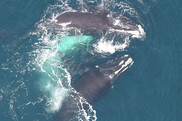
Click to edit this pNOAA Fisheries will add $1.6 million in federal funds to current funding levels to support additional recovery actions for the North Atlantic right whale. The additional funds will support reducing the risk of entanglement of right whales in fishing gear while assisting the lobster fishing industry in adapting to the impacts of new measures.laceholder text.
|
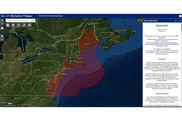
In November, we launched Version 2.0 of the Section 7 Mapper, a new mapping tool that shows where threatened and endangered species are in New England and mid-Atlantic waters. This tool helps people planning activities in our waters to understand where and when endangered marine species are present.
|
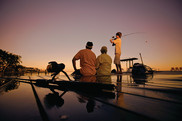
Applications will be accepted through January 21, 2020, for the Recreational Electronic Reporting Task Force of the Marine Fisheries Advisory Committee. This Task Force will provide expert advice to Marine Fisheries Advisory Committee, and subsequently NOAA Fisheries leadership, on the generation, delivery, and use of electronically reported data from private recreational anglers.
|
|
|
Alaska
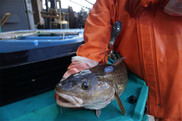
Cutting-edge technology and fishermen’s expertise are helping scientists track Aleutian Islands Pacific cod for the first time. Last winter, scientists and fishermen partnered to launch a pilot study to develop methods for tagging cod on working commercial fishing vessels.
|
|
|
West Coast

The longest-running ocean monitoring program on Earth, California Cooperative Oceanic Fisheries Investigations, provides 70 years of data and discoveries to help us better manage West Coast fisheries. Kristen Koch, director of the Southwest Fisheries Science Center, explains why this survey is so important to coastal communities.
|
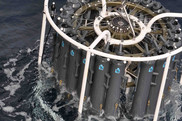
Tiny bits of DNA collected from waters off the West Coast allowed scientists to identify more species of marine vertebrates than traditional surveys with trawl nets. They also reflect environmental shifts such as unusual ocean temperatures that affect organisms.
|

The technological challenge was enormous: embed low-frequency antennas in the concrete spillway of Lower Granite Dam to detect tiny electronic tags in juvenile salmon and steelhead passing by in water rushing roughly 50 miles an hour.
|
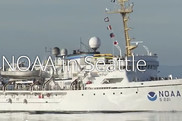
NOAA in Seattle, our new story map, invites you to visit NOAA’s home port in the Pacific Northwest. Follow our story from innovative urban restoration and stock recovery, to a pioneering journey around Antarctica and even CO2 monitoring from atop the iconic Space Needle.
|
|
|
Pacific Islands
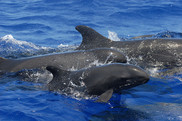
During the past decade, researchers have determined that false killer whales around the Hawaiian Islands have three distinct populations, one of which is endangered. Researchers recently used underwater microphones to investigate their whistle vocalizations.
|
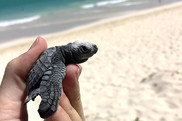
In 2019, we brought you science and conservation stories covering a wide range of topics important to the Pacific Islands region. Here are the 10 stories that resonated the most with our readers and have been shared and liked many times over social media.
|
|
|
Southeast
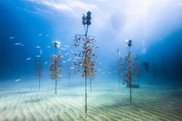
NOAA Fisheries, along with NOAA’s Office of National Marine Sanctuaries and other partners, have launched a coral reef restoration effort titled Mission: Iconic Reefs. This effort plans to restore nearly 3 million square feet of the Florida Reef Tract at seven iconic sites in the Florida Keys National Marine Sanctuary. The groundbreaking approach aims to revitalize the Florida Keys’ highly diverse and economically valuable marine ecosystem on an unprecedented scale.
|
|
|
Greater Atlantic
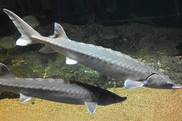
Atlantic sturgeon were once a highly valued fishery along the U.S. East Coast. Their populations declined dramatically in the late 1800s when they were overfished to supply high-quality caviar. Four of the five distinct population segments—those in the Chesapeake Bay, Delaware Bay, New York Bight, and South Atlantic—are now listed as an endangered species.
|
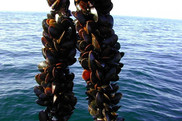
In December, Chris Schillaci joined the Greater Atlantic Region's aquaculture program, bringing 10 years of experience to his new role. We asked Chris a few questions as he was settling in.
|
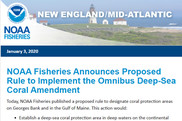
NOAA Fisheries proposes to approve and implement the measures of the New England Fishery Management Council's Omnibus Deep-Sea Coral Amendment. This action would protect deep-sea corals from the impacts of commercial fishing gear on Georges Bank and in the Gulf of Maine.
|
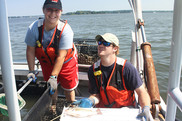
Internships at NOAA are win-win: Students gain valuable workplace experience and learn directly from experts in areas they are considering for their careers. And NOAA benefits from additional resources, as talented students share their energy, knowledge, and perspectives. Interns contribute significantly to efforts to protect and restore the Chesapeake Bay.
|
|
|
Upcoming Deadlines
January 15 Proposals due for ASMFC Regional Pilot Projects in Support of Sustainable Aquaculture.
January 16 Proposals due for Pacific Islands Region’s Marine Education and Training Mini Grant Program.
January 21 Nominations due for MAFAC’s Recreational Electronic Reporting Task Force.
January 21 Deadline for Pre-Proposals for Bycatch Reduction Engineering Program Fiscal Year 2020 Funding Opportunity.
|
|
Upcoming Events
January 13-15 Milford Aquaculture Seminar.
January 17 Maine Aquaculture Research, Development, and Education Forum in Belfast, Maine.
February 12–13 West Coast National Electronic Monitoring Workshop in Renton, Washington.
|
|
|
|